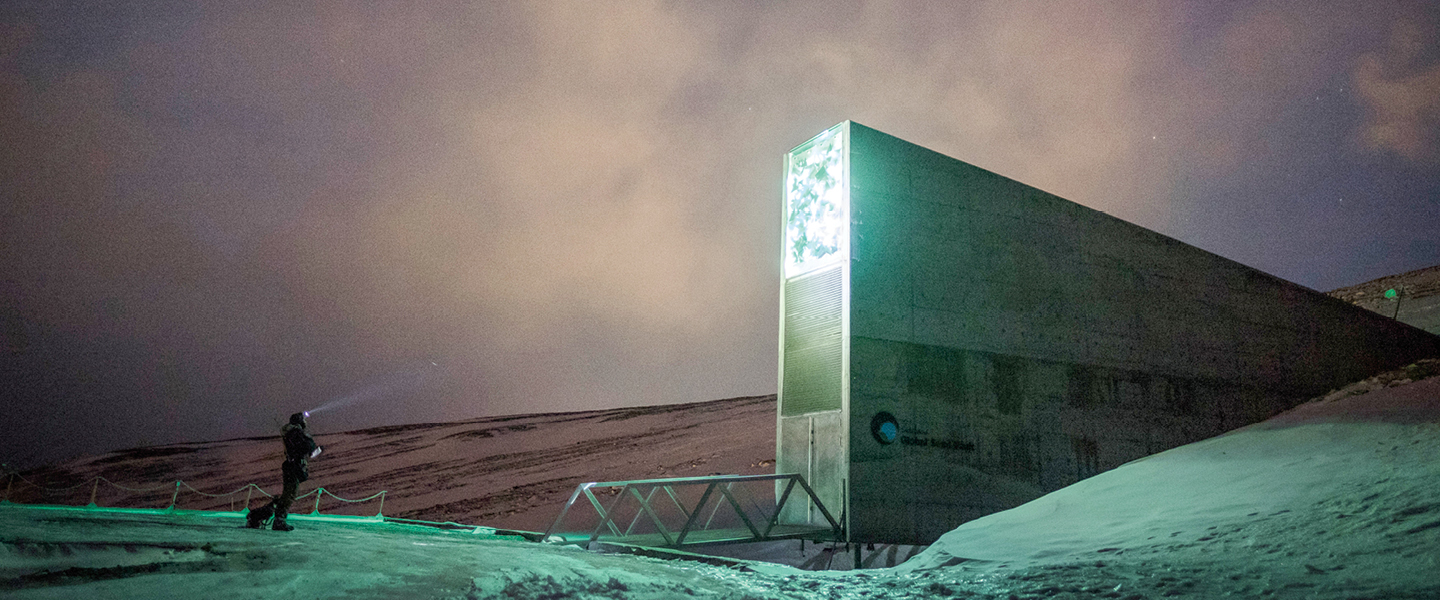

Prior to the latest deposit, the vault had actually received more than one million samples over the course of its history. "Generations from now, these seeds will still hold our history and there will always be a part of the Cherokee Nation in the world," Chuck Hoskin Jr., Cherokee Nation Principal Chief, said in a statement. This is first time that an Indigenous Native American tribe from the United States has made a deposit to the vault. In addition, the Cherokee Nation also donated nine culturally important seed varieties-such as white eagle corn and candy roaster squash-which predate the arrival of Europeans in the Americas. Among the notable additions were wild emmer wheat deposited by the University of Haifa, Israel, several potato varieties donated by Peru's International Potato Center, and 27 wild plant species from Highgrove estate in England-which is owned by British royal family member Prince Charles. In the latest deposit of seeds, several hundred different plant varieties were added to the vault, including common staple crops, vegetables and herbs. Riccardo Gangale/Svalbard Global Seed Vault The Svalbard Global Seed Vault in Norway. "The large scope of today's seed deposit reflects worldwide concern about the impacts of climate change and biodiversity loss on food production, but more importantly it demonstrates a growing global commitment-from the institutions and countries that have made deposits today and indeed the world-to the conservation and use of the crop diversity that is crucial for farmers in their efforts to adapt to changing growing conditions," he said. "As the pace of climate change and biodiversity loss increases, there is new urgency surrounding efforts to save food crops at risk of extinction," Stefan Schmitz, executive director of the Global Crop Diversity Trust, which helps operate the facility, said in a statement. If the power supply were to fail, the facility is encased in permafrost meaning that the seeds should still be preserved.

The vault is built into the rock on one of Svalbard's islands and is artificially cooled to around -18 degrees Celsius. In response, the Norwegian government has spent around $21 million upgrading the facility, equipping it with a new waterproof access tunnel, improved cooling system and other security measures to prepare for a future where climate change is only expected to increase melting in the world's permafrost regions. During the flooding, meltwater made its way into the access tunnel, although it froze before entering the vault itself.
#US DOOMSDAY VAULT UPGRADE#
The latest deposit at the Svalbard vault is the first since the completion of a major technical upgrade in 2019, which was initiated in response to flooding from melting permafrost in 2017. Depositors to the Seed Vault still own the samples that they deposit and only they can retrieve the material if required." The Vault provides secure storage for their seeds. Many seed banks-while engaged in the vitally important work of seed conservation and use-suffer from inadequate funding, political instability or the risk of catastrophic natural disasters. The latest addition means the number of seed samples at the facility-which is owned by the Norwegian government-has risen to around 1.05 million, up from roughly 990,000.Ĭierra Martin, a spokesperson for the Global Crop Diversity Trust, which helps operate the facility, told Newsweek: "The Svalbard Global Seed Vault is a secure backup facility for the seed banks of the world.
#US DOOMSDAY VAULT HOW TO#


 0 kommentar(er)
0 kommentar(er)
